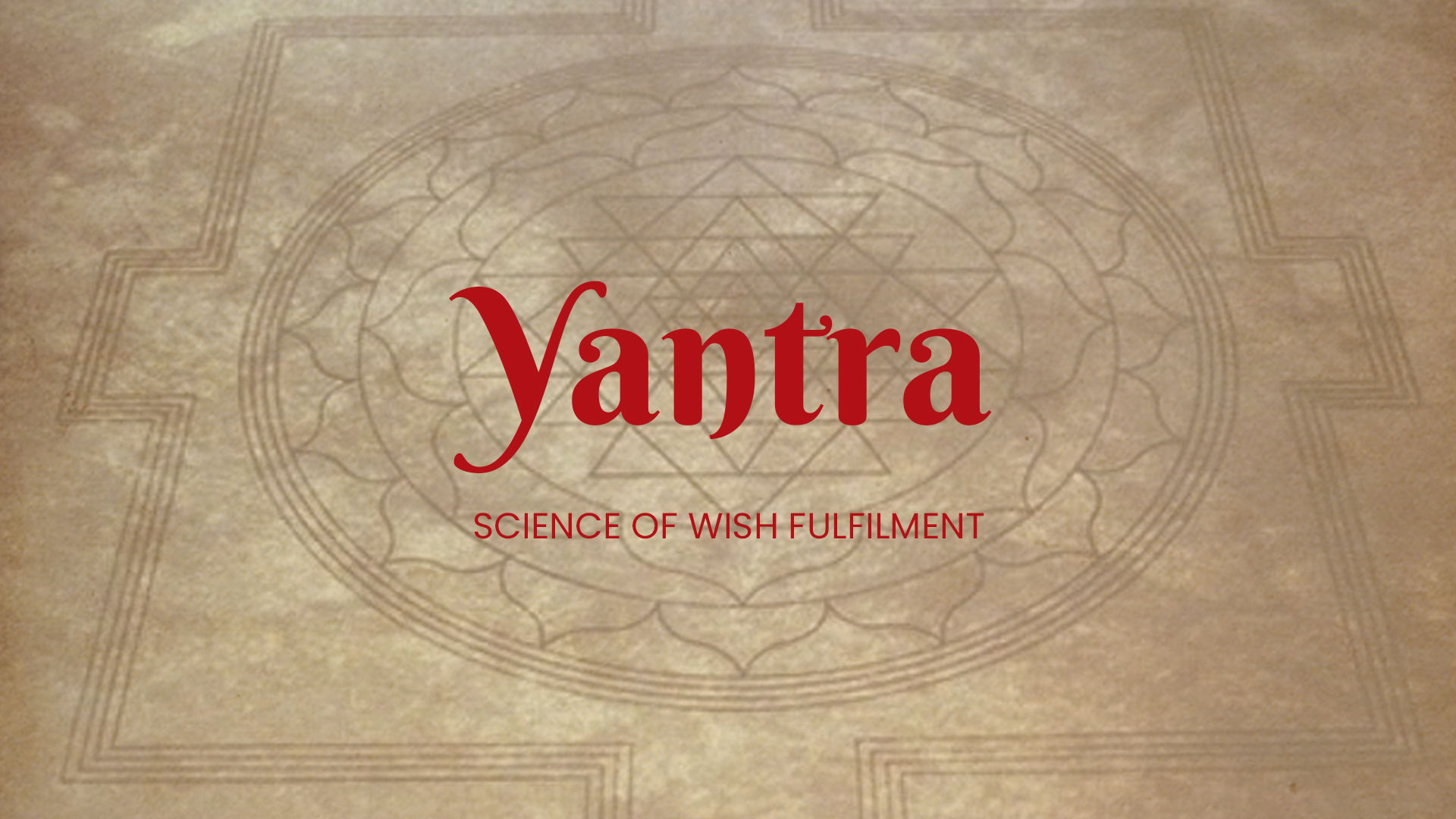The celebrated scientist Galileo Galilei, who presented the principles of gravitation, asserted that in order to understand the principles of the universe, it is imperative to comprehend the language of the cosmos. According to Galileo, the language of the universe is mathematics, and its symbols consist of geometric figures such as triangles and circles. He stated, “The universe cannot be deciphered unless we learn its language and become acquainted with the symbols in which it is written. This language is mathematical, and its characters are triangles, circles, and other geometric figures. Without these, it is humanly impossible to grasp even a single word.”
Our ancient scientists, known as Rishis, understood this concept, which is why they utilized geometrical figures and numbers in order to gain knowledge about the universe and our own existence. These figures are referred to as “Yantras,” which are instruments used to comprehend the world and our nature. In general, any machine or tool is called a “Yantra” – even the device you are using to read this article, be it a mobile phone or a computer is also considered a “Yantra.”
The term “yantra” is used to refer to machines or instruments. However, in the realm of Yantra Shastra and Agama scriptures, the definition of a “yantra” is provided differently.
The word “yantra” consists of two elements – “yam”(यम् )and “tra(त्र).
The term “yam” means to control or center. The Nirukta scriptures state:
यच्छति अत्रेति यन्त्रम्।
– निरुक्त ग्रंथ
It means, ‘That which gives or bestows is a yantra.’
And,
यमयति अत्रेति यन्त्रम् ।
– निरुक्त ग्रंथ
That which restrains is also a yantra.
So, “Yam” has two meanings – one that collects or bestows, and the other that restrains or stops.
“Tra” means one that safeguards or protects.
The Agama scriptures provide the following explanation of a yantra:
“यच्छति त्रायते चेति यन्त्रम् ।
– आगम ग्रंथ
That which collects, preserves, and provides protection is called a yantra, particularly when it refers to a specific instrument or tool.”
Absolutely, a Yantra serves two functions.
Firstly, it acts as a gatherer, accumulating or focusing energies, resources, or specific qualities. This involves the process of collection, concentration, and channeling toward a desired purpose.
Secondly, a yantra operates as a protector, shielding against negative influences or malevolent forces. It serves as a defense mechanism or guardian, ensuring the preservation and well-being of the associated individual or entity.
Elaborating on these two attributes in detail helps us better understand the essence and significance of a yantra.
The first attribute of a yantra is that it gathers or consolidates energy. This brings up the question of what exactly it collects. The answer lies in the fact that a Yantra stores the energy that manifests at specific times or in specific places.
As we all know, due to the movement and alignment of celestial bodies such as the sun, moon, planets, and stars, there are certain periods when cosmic energy vortexes open up, making the enigmatic cosmic energy available on Earth. Our ancient sages understood and comprehended these calculations of time, and they also knew the methods to store this energy. Just like modern data storage centers, yantras serve as machines that store universal energy.
Moreover, not only does a yantra gather energy that manifests at specific times, but it also plays a crucial role in storing or restoring the energy of particular spaces that possess powerful and energetic qualities, which are rare occurrences on Earth.
The second attribute of a yantra is its ability to provide protection or defense. It “trāṇayati” or “trāyati,” which signifies that it safeguards and shields. There is a specific verse in “Gargya Samhita”:
“दुःखनिर्यन्त्रणाद् यन्त्रमित्याहुर्यन्त्रवेदिन: ।
– गार्ग्य संहिता
It is referred to as a yantra precisely because it alleviates suffering.”
Just like we have seen that a Yantra stores energy present in time and space, it also serves the purpose of protecting us by eliminating the negative aspects and negativity of our time and space.
For example, let’s say there is a malefic planet or unfavorable planetary transit in your birth chart. A yantra can help mitigate the negative effects of such planetary positions.
So, if we are going through a difficult time or experiencing hardships due to unfavorable planetary configurations, the capacity of a yantra lies in reducing the impact of those celestial influences, preventing us from experiencing pain. Similarly, if there are Vastu defects in our living space causing us discomfort, a yantra has the potential to alleviate such suffering. In essence, yantras are considered a potent tool in astrological remedies or the field of Vastu Shastra.
Not only that but there is a web or network of energy present throughout the universe, as acknowledged by scientists ranging from Einstein to Stephen Hawking. Dr. Michio Kaku, the author of “Physics of the Future,” has also written about it:
“We will live in a mathematical world or matrix. The Universe is a mathematical correlation between sound and form. All matter is nothing but a mathematical Symmetry of vibrations and frequency of energy particles.”
I would like to add one more thing, yantras not only serve the purpose of storing or providing protection but they also have a third function, that is granting success in one’s endeavors. Just like how Air Conditioner machines or Yantras provide relief in hot weather by cooling us down. In life, if we desire knowledge, business success, wealth, relationships, or good health, yantras assist us in attaining those goals.
All the scriptures that deal with destiny affirm that the universal energy which fulfills desires is referred to as Dev(देव) the universal wish-accomplishing energy. Just as the soul is to the body, and oil is to a lamp, yantras are meant for the deities.
Let’s take a look at a verse from Kularnava Tantra:
शरीरमिव जीवस्य दीपस्य स्नेहवत् प्रिये ।
यन्त्रमित्याहुरेतस्मिन् देव: प्रिणाति पूजित: ॥
– कुलार्ण तंत्र
Based on the utility of yantras, there are seven types of yantras:
- Sharira Yantra (Body Yantra): It is used for spiritual development or awakening the Kundalini energy under the guidance of a guru. It corresponds to the seven chakras in our subtle body – Muladhara, Svadhisthana, Manipura, Anahata, Vishuddha, Ajna, and Sahasrara.
- Dharna Yantra (Wearable Yantra): Yantras are worn on different parts of the body.
- Asana Yantra (Seat Yantra): These yantras are placed beneath the seat where we sit.
- Mandala Yantra: This type of yantra is created by arranging individuals or objects in different positions. The main person is placed at the center, and other individuals are positioned in different directions.
- Puja Yantra: These yantras are used for performing rituals for Navagraha puja, Vastu dosha removal, and deity worship.
- Chhatra Yantra (Umbrella Yantra): This type of yantra is placed above the person like an umbrella, shade, or inside the turban. They can also be carried in pockets or purses.
Darshan Yantra: These yantras are placed inside temples for providing darshan (sacred view) to the devotees. Surprisingly, the worship in most well-known temples is centered around yantras. For example, in the Ambaji Temple in Gujarat, the worship of the Bisa Yantra is performed.
In Jagannath Puri, the worship of the Bhairav Yantra is performed, and in Nathdwara, the worship of the Sudarshan Yantra is performed.
Remember, the material, timing, location, and the person who creates the yantra are all crucial aspects that require specialized knowledge. If the principles of purity, sanctity, and other guidelines are not followed during the construction of the yantra, it will not provide any benefits. Therefore, it is important to understand and adhere to all the principles while creating or getting a Yantra constructed.
Shubham Bhavatu.








